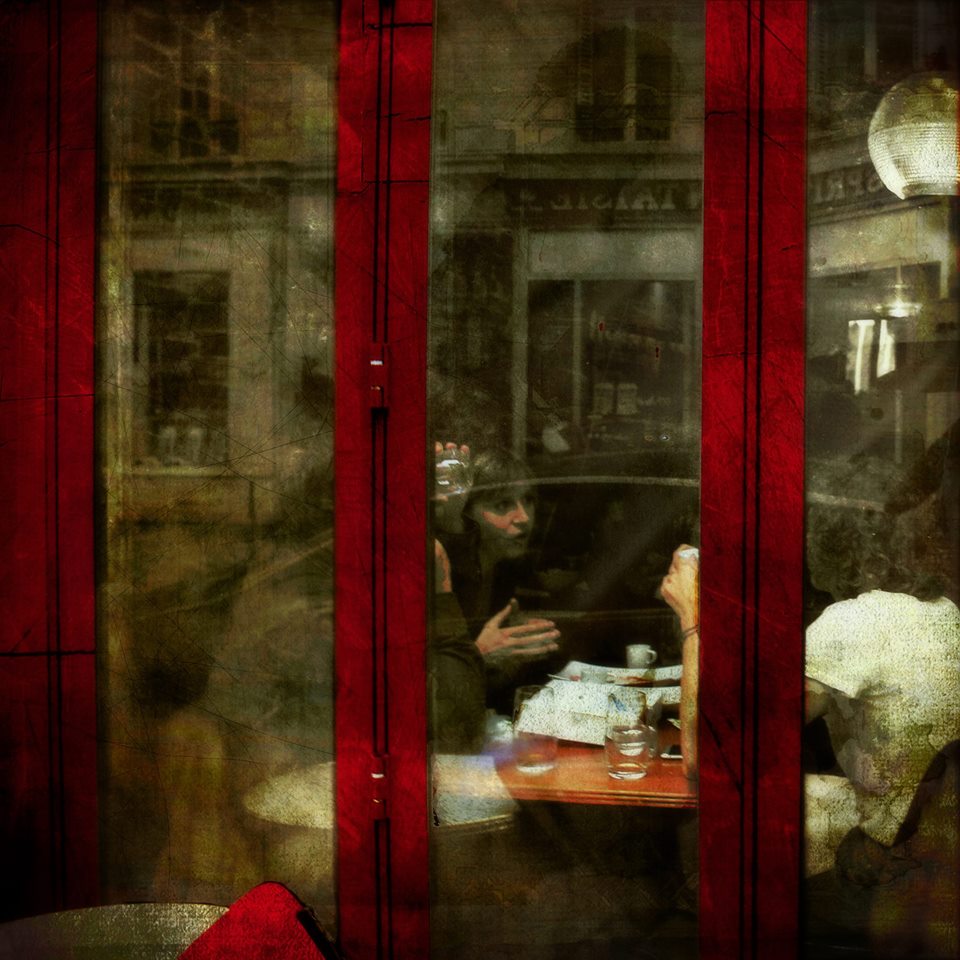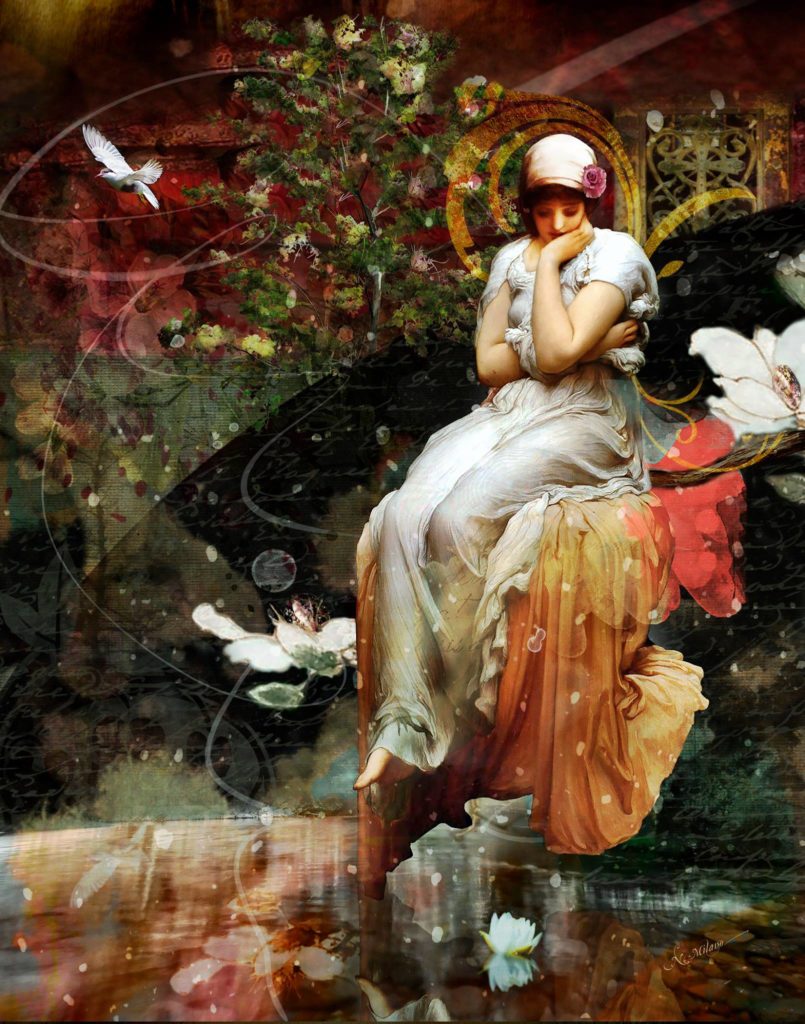— Exploring Photo Artistry: What Will (Likely) Sell, and What (Most Likely) Will Not.
“Yeah, well, you know, that’s just, like, your opinion, man.” — The Dude, The Big Lebowski
Now that our AWAKE portfolio site ArtBoja.com is taking flight, and with the ability of the artists to sell their prints on the very near horizon, I find myself thinking more and more about just how marketable the various artwork will prove when it’s put out there to the world.
No doubt this is also much on the mind of many of the artists themselves.
So I’d like to lay out a few of my thoughts on this subject of selling one’s artwork, and while in the end these are all just my opinions, I think with the experience I’ve acquired and the careful reflection I’ve given the subject, there’s at least some reasoning behind what I’m going to explore here.
Should at least give you something to think about, and get you turning over some ideas you might not have considered until now.
Let’s start with a question I think anticipates everything that will follow:
Should You Even Sell Your Work At All?
To some the answer is a clear “Of course!” To others maybe it’s not so clear cut. But I’d suggest to any who aren’t sure of selling their work to get clear about why they might feel hesitant. Is it just because you don’t feel your work is good enough yet? If so, I wouldn’t necessarily jump to that conclusion. (Artists tend to be terrible judges of their own work.) Personally, my answer to anyone asking me if they should sell their work is, “Why not?” I mean, what’s the worst that can happen? You’ll make someone happy and earn a little money?
I suspect the real reason some wouldn’t want to sell their work (wouldn’t want to even put it out there for sale at all) would be because they worry that it might NOT sell, which would then make them feel bad about themselves.
But the truth is, there’s nothing guaranteeing that any artist will sell his work. Even a great artist might run into problems finding a receptive market. (I’ll be talking about this next.)
So again: I’d say go ahead and just put your work out there. Replace it with newer, better compositions as you improve and find your voice. But put it out there. Why not?
Now, just to be clear: with all the power and possibility inherent in my universal “Why not?” there’s certainly no reason you HAVE TO sell your work. If you just really have no interest whatsoever in selling your art, that’s fine too. I’m totally OK with that. Although maybe after we explore the next big question I pose here you might find yourself reconsidering.
Here’s the next big question I have for you:
Is Your Work Even Likely To Sell? (Given Where and How You’re Trying to Sell It)?
This might be the most important take-away you get from this post, so sit up straight and hear me on this one.
Not every work of photo artistry is going to make for a sellable print or canvas.
It’s just not.
Maybe it will sell once or twice (there’s always someone out there), but some works of photo art simply aren’t suitable for decorating a home or office.
That’s fine. Totally fine. And perfectly understandable.
If you look through a bunch of digital artistry (preferably not your own), and if you actually ask yourself whether YOU would hang it in YOUR home, you’ll quickly realize that there’s a ton of great art out there that is awesome on a computer screen but not something you would ever actually hang on the wall.
A few examples:
— You probably wouldn’t hang an artistic rendering of someone else’s kid grinning at the camera. Anyone seeing that on the wall might admire the craftsmanship that went into it, but the first question they’re going to ask is “Who’s that?”
— You also won’t likely hang a 48-inch canvas showcasing a dragon towering over a wizard with a waterfall and rainbow featured spectacularly in the background. Might be an amazing piece of art, but unless you’re 15 years old and a fan of Dungeons and Dragons, you probably don’t want it hanging on the wall where you’ll see it everyday.
— You will almost surely also pass on the 36 x 48 aluminum print of a luscious model (clearly a stock photo) entwined with a python on the hood of a classic Corvette. Again, it could be incredibly well done, but would you really hang it in the front entry of your house or put it over your desk at work?
OK. Then What WILL Sell?
Artwork we hang on a wall as a print or canvas requires a certain universal artistic touch. Above all, it needs to FEEL like ART. The more “artsy,” the better. (Which is why rendering work somewhat “painterly” can be advantageous when it comes to selling prints.)
Part of feeling “artsy” comes down to the techniques employed, but also has to do with the subject matter. And you can get away with incredibly mundane subject matter in this case, as long as the overall effect is artistic and universal enough to work as decor.
“Painterly” work, “collage” work, “abstract” work, “mixed-media” work, “serious” work, “minimalist” work — all this has a great chance at selling (not only to individuals, but to businesses, like doctors, lawyers, architects, even restaurants and hotels). And the reason it will have a chance at selling is that, quite simply, it will FEEL like ART you would hang on a wall.
Again, the more universal the better. Instead of a specific little girl smiling at the camera, get your young model to twirl through some tall grass and render her partly blurred and looking away (preferably not smiling). Instead of the scene with the dragon and wizard, you could certainly get away with a close-up of some aspect of either, as long as you rendered it abstract enough. Instead of our maiden with the python and a Corvette, maybe just the Corvette … or maybe a more abstract and painterly rendering of the model, more classically posed.
And ultimately, if you can give the viewer something to THINK about, something to puzzle through, something in which to lose himself … something evocative, and not quite so literal … something that captures the eye and then holds it a while … If you can do that, your work is more apt to find itself sold as a print or canvas.
But Here’s the Thing: Who Says Your Art Has To Sell as a PRINT?
Selling your artwork as a print or canvas is just ONE way to sell your work. That’s just one market.
And ya know what? It’s a tough market too. The competition out there is enormous. You’re not just competing against other contemporary photographers and digital artists. You’re competing against ALL the art being printed — images and paintings and photographs of material from all over the world, dating back to Ancient Egypt!
Not to say you shouldn’t try to sell your prints if you have artwork suited to it.
But if you take a minute to think it through, you’ll find a whole spectrum of commercial possibilities you could be exploring if your artwork doesn’t quite fit the print and canvas market.
— One possible market would be the rich realm of commissioned work (bridal shoots, children’s portraits, boudoir). Find the right clientele and position yourself right, you can build a serious career creating one-of-a-kind canvases for individual buyers.
— There’s also the extensive (and highly lucrative) realm of commercial art and design. Where an individual buyer at an art show might (after much deliberation) come off a few hundred dollars for one of your prints, you might find yourself shaking hands on a 4- or even 5-figure deal with a business owner after showing him some images on your iPad. If he can see your work making his website look cooler, his product packaging more attractive, his advertisements more eye-catching, that kind of visual makeover can be incredibly compelling. And the artwork here will likely be precisely the kind of work that wouldn’t look good at all as home decor.
— Then there’s the whole publishing market, where your artwork might make for a great book cover or CD design, where your images might be perfect accompanying a magazine article, where with a bit of typography your artwork could make for a superb promotional poster. Artwork that might never “fit” above the fireplace in someone’s home might land you a gig to design the artwork for a whole series of publications put out by a hospital, a major charity, a music venue.
I could go on and on, with dozens of examples. But I think you get the point. In each of these cases, the artwork “appropriate” here is sure to be much different from the kind of artwork you would normally think to frame and put on the wall.
If you want to go after this kind of work as an artist — which is to say, if your artwork lends itself to something other than home and office decor — I think you’ll find a vast world of possibilities before you.
You’ll still want to set up an online portfolio of work (you need somewhere to direct potential clients), but don’t stress over whether or not you sell a 48” Plexiglass-mounted print anytime soon. Might never happen. And that’s OK. Create the kind of art you want to create. Create the kind of art that excites you. Create art you love.
Only then sit down and give your portfolio a close look and ask yourself where your kind of art might best find a ready buyer.
This will then shape the plan you put in place to get your work in front of the right audience (positioned in the right way).
But that’s the subject of a future post.
Time For An Assignment
For now, try this.
Go through the page of a few issues of our magazine at ThePhotoArtisticLife.com (or go explore the various artwork on ArtBoja.com) and on each piece ask yourself this question:
“Would someone realistically hang this on their wall?”
If the answer is ‘Yes,’ ask yourself why. What makes it FEEL like “ART”? What makes it work as decor?
If the answer is ’No’ — if it probably wouldn’t make for a likely framed print — then ask yourself a follow-up question:
“Where WOULD this kind of art (either this particular piece or something in this style) FIT?”
In other words, what kind of businesses, shops, organizations, companies, or publishers might find work like this valuable?
This should give you a good deal to think about.
And then what I want you to do is get in the habit of looking at the artwork all around you. Look at what people DO hang on their walls. Visit some popular local galleries and look at what they’re selling. (Although don’t be intimidated by some of the absurd crap you find in modern art museums. The art world is filled with frauds. Pay them no mind.)
When you’re out and about, look at the artwork on the covers of books and CDs, the artwork on posters, the art and design work on various websites you admire, the artsy stuff for sale in boutique shops …
When you start to look around, you’ll find photography and artwork everywhere. Much of it will be plainly awful. But much of it is also quite amazing. Both should inspire you.
As an artist, if you’re to remain authentic and true, you must create artwork that moves you and excites you and makes you happy. You should never create art just to try to fit into a particular niche, just to impress someone, or just to make your work “sellable.” That’s just going to make you miserable. You never want to twist your art just to make a buck.
Be genuine.
Be YOU.
Only create art that you love to create.
And only after you’ve found the style and material you love to work with — the kind of art you would create if no one were watching — only then begin to think about where it might find the perfect home. Or the perfect business.
Just don’t be surprised (or worried) if it doesn’t quite “fit” as a likely print or canvas.
The world is big. And filled with people engaged in all manner of things.
And as long as there are people, they’re going to need ART.
Even yours.
For some, especially yours.
– Sebastian
POSTSCRIPT:
The feature image on this post is a piece by AWAKE artist Eugenio Garrido Martín, representing the Rhine and the Dutch landscape. This image makes for a great example of something that will doubtless sell quite well as a print or canvas (and at a very nice price) but which could also possibly find itself acquired commercially. Just an excellent image. Perfect to market as a print.

The image below, on the other hand, by the immensely talented Teddi Rutschman, is extraordinary in itself. But I have a hard time imaging someone wanting to have this on their living room wall as a big print. Maybe. But I just think it’s much more likely to find a home in a commercial market. It could be on the cover of a book, on a CD, on a poster (promoting a performance of A Midsummer Night’s Dream perhaps?), on a website, as a postcard, etc. Or maybe it could be part of a collection of artwork published in book format, with an entwined narrative about fairies … I can see all of this. But I don’t think it will necessarily make for a successful PRINT. And that’s fine. It has tremendous potential elsewhere, in the commercial market.

Here’s another example. Below we have an image by Susan Park Crosby. I think it is marvelous — but I just can’t see it selling well as a print or canvas. And that’s OK. Because I can totally see this in a collection of works printed as a book. Or used to accompany an article in a magazine. (Though for a whole slew of images perfectly fit for print, check out the rest of Susan’s portfolio by clicking here … Check out especially her works “Washington Square,” “Budapest Sketchbook,” and “September Shadows” for great examples of images that will surely sell as prints.)

With this next image however, by Vivien Buckley, we absolutely have an image that will sell as a print or canvas. It’s not just artistic (all of these images here are artistic), but it FEELS like the kind of art you can imagine a lot of viewers being happy to hang as a print or canvas in their homes or in their offices.

This image below on the other hand, by Mike Stone, probably won’t find many buyers as a print. Might find some, but I doubt it will score many. Yet it’s EXCELLENT as a work of commercial artistry. And indeed, Mike designed this piece expressly for use as the artwork on a CD cover for a band in Australia.

But then, in this piece below, a truly magnificent composition by Nancy Milano, we have something that I can easily see bridging both worlds. I can totally see this image as an illustration for a book or as leading off an article in a prestigious magazine (Harper’s?). But I can also see this making for a popular framed print.

Ultimately, each piece must find its own way in this world. Just don’t look to force it into a function it’s not meant to fulfill. Some works are suited beautifully for print or canvas. Others are more suited to landing you a commercial gig. And then others, like this final piece above, might be perfect for either.
Your role is but to create. And see where your creations take you.
– S.

